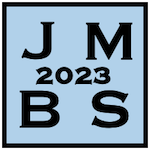Image registration is a crucial preliminary step for many image processing tasks, especially in the medical field where multiple scans are often taken for the same patient, sometimes with different modalities. It consists in computing a motion field, transforming a moving image into a fix image's frame, thus fusing information from multiple sources into one image.
Variational methods are widely used to solve this problem: the registration task is formulated as the minimisation of an energy functional, made of a data fidelity term and a regularisation term. However, without proper consideration of the boundary conditions applied, the registration quality may be hindered. Even more so when only partial fields of view are available: relevant information is located up to the edges of the scan, but the lack of neighboring pixels prevents registration algorithms to properly estimate the motion on the boundaries. Nonetheless, most registration algorithms apply generic global boundary conditions such as homogeneous Neumann boundary conditions or homogeneous Dirichlet boundary conditions, without accounting for the images specificity.
We show that a locally adapted boundary condition improves the registration results without a significant increase in complexity. To do so, the proposed framework allows for the supervision of any variational methods though flux detection. We investigate two methods for computing flux maps: one relying on the registered images, the other on the estimated motion fields ; along with two easily adapted local boundary condition: a non homogeneous Dirichlet boundary condition and a Robin boundary condition with source term.
As for the implementation, this method requires very few modifications in the original variational based registration algorithm. First, the supervision need be computed at the beginning of the estimation, and it may be actualised as often as desired. A single update of the motion field, using the original registration algorithm, is sufficient to gain the necessary flux information. A suitable metric is then used on the results, registered images and/or motion field estimates, to obtain the flux map that is directly supervising the locally adapted boundary condition later on. Last, the perimeter of the estimates are updated prior to any computation involving the motion field in order to ensure that the boundary conditions are always verified.
The framework is tested on the DIR-Lab dataset consisting of 10 pairs of lung CBCT scans. Experiments show a relative reduction in mean target registration of up to 15% in certain cases and 5% on average when an appropriate supervision and parametrisation are used, compared to aforementioned generic boundary conditions. To further challenge the framework, the data set was cropped around the expert landmark, leaving a margin of 10 voxels. The differences between locally adapted and global boundary conditions are exacerbated: on average, we obtain a relative reduction of up to 18% in certain cases and 7% on average.
To conclude, our contribution is a straightforward framework allowing to improve any variational based registration algorithm without a significant increase in complexity. Our method relies on boundary conditions locally adapted to the images specificity via flux maps computed on the fly: a first in the field.

 PDF version
PDF version
